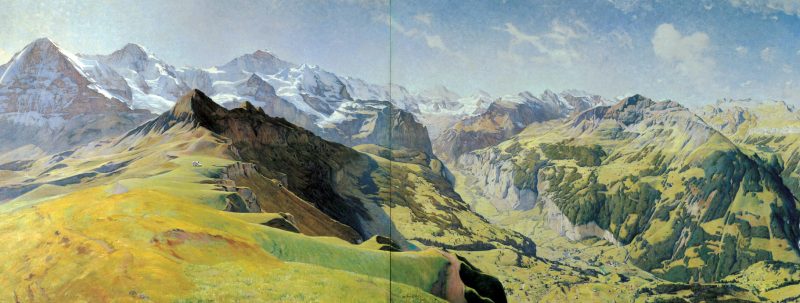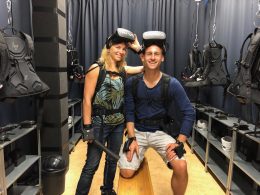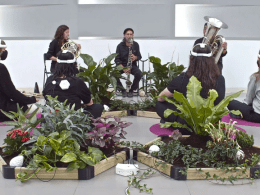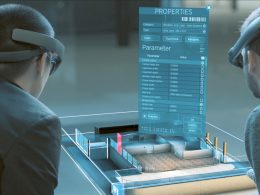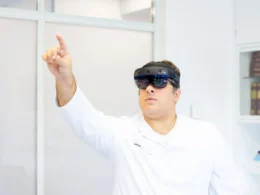"Beyond the panorama. On the construction of landscapes" - the special exhibition in the Thun-Panorama shows surprising dimensions of the staging of images. It uses a variety of media and enriching methods, including virtual reality, to show how landscapes have been constructed and staged over the last 200 years in panoramic images, film and photography.
At Thun-Panorama was finally able to open the 2020 special exhibition on Tuesday, 30 June. The exhibition takes a new look at the panorama. The late bloom of this medium at the end of the 19th century coincided with the time of the first films, where the play with illusion in constructed landscapes was staged in a new way.
The exhibition examines how, beyond the panorama, the media of film, video and digital art have been exploring new possibilities for the representation of landscape ever since. Works by Gary Beydler, Rémy Zaugg/René Pulfer and Philipp Gasser meet a filmic reconstruction of a cityscape from 1896 in 3D.
"Landscape" is nothing predetermined
The exhibition "Beyond the Panorama - On the Construction of Landscape" aims to showcase a central section of the intricate history of images. It does this in the main section by focusing on the two turning points in the Swiss panorama landscape: 1809, when Marquard Wocher began the Thun panorama, and 1903, when Auguste Baud-Bovy's celebrated Jungfrau panorama sank in a storm in the Irish Sea while on tour.
The only remaining trace of this gigantic panorama is the oil painting maquette shown in the exhibition, the so-called Aeschi panorama. A photograph produced especially for the exhibition using the latest media technology combines the current panoramic view of Thun, as seen from Marquard Wocher's vantage point, with the historical panorama in a front projection.
Construction of landscape in film, video and digital art
The late bloom of the panorama came at the time of the first films at the end of the 19th century. In these films, the illusion of a constructed landscape was staged in a new way. This was also the case in the newly researched films shown in the exhibition by the Swiss entrepreneur Henry Lavanchy-Clarke, who used the recently launched "Cinématographe Lumière" to film the Village Suisse at the 1896 National Exhibition in Geneva - complete with artificial mountain - in which the gigantic Jungfrau panorama by A. Baud-Bovy was concealed.
With VR on the old Rhine bridge
Another film by Lavanchy-Clarke, which he shot on the Old Rhine Bridge in Basel in 1896, can be experienced in the exhibition - expanded into a computer-generated panoramic view - using anaglyphic video in 3D stereo.
The virtual reconstruction of the Old Basel Rhine Bridge not only brings back the all-round view of the panorama: even the space beyond the faux terrain is now virtually accessible. The computer thus also constructs those areas of the landscape that lie beyond our field of vision or point of view.
The image and its carrier medium in and between the imaginary landscapes is also the theme of Rémy Zaugg's films Projections from 1990/2019, created in collaboration with René Pulfer. Finally, Philipp Gasser's (*1958) 3D computer animation New Snow takes up the theme of the panorama in the familiar form of a mountain station webcam.
Time travel of media technologies
It digitally traces the view of Bergün and the weather in the Albula Valley from 7.00 am to 7.00 pm. At the same time, this second-degree media landscape construction is a journey through time: The constructed images run through the media technologies before high definition, iPhone and virtual reality - and all these steps backwards leave their traces and artefacts.
The exhibition was curated by Simone Büsch-Küng, research associate at the Kunstmuseum Thun, Hansmartin Siegrist, David Bucheli and Andreas Weber (Digital Literacy and Early Swiss Cinema project at the Department of Media Studies at the University of Basel), in collaboration with the Basel School of Art and Design (FHNW), Andreas Wenger, Institute of Interior Design and Scenography and the French Centre national du cinéma et de l'image animée (CNC), with the kind support of Gebert Rüf Stiftung.
Source: jungfrauzeitung





